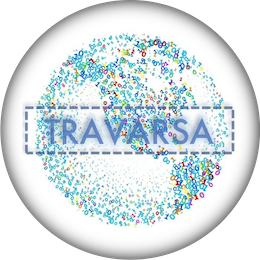Arm yourself with insights! Explore top 10 cyber threats and fortify your digital....
Read MoreTop AI (Artificial Intelligence) Tools and Frameworks

Welcome to the heart of Artificial Intelligence! This article unveils the brilliance of TensorFlow, PyTorch, Scikit-learn, Keras, MXNet, Caffe, Theano, SciPy, NLTK, and OpenCV—the unsung heroes fueling innovation across diverse domains.
From cutting-edge machine learning to seamless natural language processing and computer vision—this article unveils the secrets behind these game-changing tools!
Artificial Intelligence: Top 10 Tools and Frameworks
Welcome to the AI Wonderland! This article is your gateway to understanding and harnessing the power of top-tier AI tools and frameworks. From the neural landscapes of TensorFlow to the language mastery of NLTK, each tool has a unique story to tell. Whether you’re diving into machine learning, exploring computer vision, or delving into the intricacies of natural language, these tools are your companions in the quest for knowledge. Let the exploration begin!
1. TensorFlow
TensorFlow is an open-source machine learning library developed by Google. It provides a comprehensive ecosystem of tools, libraries, and community resources to support the development and deployment of machine learning models.
Common Usage:
- Deep Learning Models: TensorFlow is extensively used for building and training deep learning models, including neural networks for tasks such as image classification, object detection, and natural language processing.
- Research and Development: It serves as a foundation for research and development in the field of machine learning, facilitating experimentation with new algorithms and architectures.
- Production Deployments: TensorFlow enables the deployment of trained models in various production environments, allowing seamless integration into applications and systems.
- TensorBoard: TensorFlow provides TensorBoard, a visualization toolkit, to monitor and analyze the training process, model performance, and other metrics.
- Compatibility: TensorFlow supports deployment on various platforms, including cloud services, mobile devices, and edge devices, making it versatile for diverse applications.
TensorFlow’s flexibility, scalability, and robust community support make it a go-to framework for researchers, developers, and enterprises involved in the development of machine learning and deep learning applications.
2. PyTorch
PyTorch is an open-source deep learning framework developed by Facebook. It is distinguished by its dynamic computation graph, offering flexibility for researchers and developers.
Common Usage:
- Research and Prototyping: PyTorch is widely utilized for research and prototyping in machine learning and deep learning due to its dynamic computation graph, allowing for easy experimentation.
- Natural Language Processing: Frequently employed in natural language processing tasks such as sentiment analysis, language modeling, and machine translation.
- Computer Vision: Commonly used in computer vision applications, including image classification, object detection, and image generation.
- PyTorch’s user-friendly interface and dynamic nature make it a preferred choice for those involved in cutting-edge research and development in the field of artificial intelligence.
3. Scikit-learn
Scikit-learn is an open-source machine learning library for Python, offering simple and efficient tools for data analysis and modeling. It provides various algorithms for classification, regression, clustering, and more.
Common Usage:
- Classification and Regression: Scikit-learn is extensively used for building and evaluating machine learning models for classification and regression tasks.
- Clustering: It offers algorithms for clustering tasks, helping to group similar data points together.
- Dimensionality Reduction: Commonly employed for reducing the number of features in a dataset while preserving its essential information.
- Data Preprocessing: Scikit-learn provides tools for preprocessing data, including handling missing values and scaling features.
- Model Evaluation: Widely used for evaluating model performance through various metrics like accuracy, precision, and recall.
Scikit-learn is a versatile and beginner-friendly library that plays a crucial role in the data science and machine learning ecosystem, particularly for tasks related to data analysis, model development, and evaluation.
4. Keras
Keras is a high-level neural networks application programming interface (API) written in Python. It acts as an interface for deep learning frameworks, including TensorFlow and Theano, simplifying the process of building and training neural networks.
Common Usage:
- Rapid Prototyping: Keras is favored for its ease of use, making it an ideal choice for rapid prototyping and experimentation with deep learning models.
- Multi-Backend Support: It allows seamless switching between different backends, primarily TensorFlow and Theano, providing flexibility to developers.
- Neural Network Architectures: Commonly used for creating various neural network architectures, including convolutional neural networks (CNNs), recurrent neural networks (RNNs), and more.
- Beginner-Friendly: Its user-friendly syntax makes it accessible for beginners, enabling them to dive into the world of deep learning without extensive knowledge of the underlying frameworks.
Keras facilitates the development of complex neural networks with simplicity, making it a preferred choice for both beginners and experienced developers in the field of deep learning.
5. MXNet
MXNet, endorsed by the Apache Software Foundation, is an open-source deep learning framework designed for efficiency and flexibility. It supports both symbolic and imperative programming, providing a dynamic computation graph.
Common Usage:
- Efficient Deep Learning: MXNet is known for its efficiency in deep learning tasks, delivering high performance for training and inference.
- Flexibility: Its support for both symbolic and imperative programming allows users to choose the paradigm that best suits their needs, offering flexibility in model development.
- Scalability: MXNet is designed for scalability, making it suitable for distributed computing and handling large datasets.
- Cross-Platform Deployment: It supports deployment on various platforms, including cloud services and edge devices, contributing to its versatility.
- Mixed Precision Training: MXNet enables mixed-precision training, optimizing memory usage without compromising model accuracy.
MXNet’s efficiency, flexibility, and scalability make it a powerful tool for deep learning tasks across various domains, from research and development to production deployments.
6. Caffe
Caffe is a deep learning framework developed by the Berkeley Vision and Learning Center (BVLC). It is known for its speed, modularity, and expressive architecture, making it efficient for computer vision tasks.
Common Usage:
- Computer Vision: Caffe is widely used for computer vision tasks, including image classification, object detection, and image segmentation.
- Model Deployment: It is known for its fast inference, making it suitable for deploying trained models in real-time applications.
- Modularity: Caffe’s modular architecture allows researchers and developers to easily experiment with different network architectures and components.
- Pre-Trained Models: Often employed for using pre-trained models and fine-tuning them for specific tasks in computer vision.
- Community Contributions: Caffe has a strong community, contributing to its library of pre-trained models and the development of new features.
Caffe’s emphasis on speed and modularity makes it a preferred choice for researchers and developers working on computer vision projects, where efficient and fast inference is crucial.
7. Theano
Theano is an open-source numerical computation library for Python that allows developers to efficiently define, optimize, and evaluate mathematical expressions involving multi-dimensional arrays. It was developed by the Montreal Institute for Learning Algorithms (MILA) at the University of Montreal.
Common Usage:
- Symbolic Computation: Theano excels in symbolic computation, enabling the creation and optimization of mathematical expressions symbolically.
- Deep Learning Research: It has been widely used in deep learning research for implementing and optimizing neural network models.
- CUDA Integration: Theano seamlessly integrates with CUDA, allowing users to leverage the power of GPUs for accelerated numerical computations.
- Numerical Stability: Known for providing tools for achieving numerical stability in mathematical computations, crucial for deep learning models.
- Educational Purposes: Theano has been used in educational settings to teach concepts of symbolic computation and deep learning.
While Theano has been influential in the early development of deep learning frameworks, it is important to note that its development has been discontinued, and users are encouraged to transition to more modern frameworks like TensorFlow or PyTorch.
8. SciPy
SciPy is an open-source library for mathematics, science, and engineering that builds on the capabilities of NumPy. It provides additional functionality for optimization, integration, interpolation, eigenvalue problems, signal and image processing, statistical functions, and more.
Common Usage:
- Scientific and Technical Computing: SciPy is a go-to library for scientific and technical computing tasks, offering a wide range of functions for numerical operations.
- Data Analysis: Frequently used in data analysis and manipulation due to its rich set of mathematical and statistical functions.
- Signal and Image Processing: Applied in signal and image processing applications, offering tools for filtering, transformation, and analysis.
- Statistical Analysis: SciPy provides statistical functions for hypothesis testing, probability distributions, and statistical modeling.
- Optimization: Utilized for solving optimization problems, including linear and nonlinear programming.
SciPy, together with NumPy, forms a powerful ecosystem for numerical computing in Python, catering to a broad spectrum of applications in scientific research, engineering, data science, and more.
9. NLTK (Natural Language Toolkit)
NLTK is an open-source platform for building Python programs to work with human language data. It provides tools for working with linguistic data, facilitating natural language processing (NLP) tasks.
Common Usage:
- Text Processing: NLTK is extensively used for various text processing tasks, including tokenization, stemming, and lemmatization.
- Part-of-Speech Tagging: Widely employed for assigning parts of speech to words in a sentence, a crucial step in many NLP applications.
- Sentiment Analysis: Applied in sentiment analysis tasks, determining the sentiment expressed in a piece of text, such as positive, negative, or neutral.
- Language Modeling: NLTK supports language modeling, aiding in the analysis and generation of human-like text.
- Machine Translation: Used in machine translation systems to process and understand language for translation purposes.
NLTK is a versatile toolkit that plays a pivotal role in the development of applications involving natural language understanding and processing, contributing to advancements in areas such as information retrieval, chatbots, and language translation.
10. OpenCV (Open Source Computer Vision)
OpenCV is an open-source computer vision and machine learning software library. Originally developed by Intel, it provides a vast array of tools and algorithms for real-time computer vision applications.
Common Usage:
- Image and Video Processing: OpenCV is widely used for processing and analyzing images and videos, including tasks like filtering, segmentation, and feature extraction.
- Object Detection: Applied in object detection applications, identifying and locating objects within images or video streams.
- Facial Recognition: Used for facial recognition tasks, such as detecting faces and recognizing facial features.
- Machine Learning Integration: OpenCV integrates with machine learning frameworks, allowing the implementation of machine learning models for computer vision tasks.
- Robotics and Autonomous Systems: Applied in robotics for tasks such as navigation, object manipulation, and visual perception.
OpenCV’s extensive set of functionalities makes it a fundamental tool for computer vision applications, spanning a wide range of industries, including robotics, healthcare, surveillance, and augmented reality.
As we conclude this AI expedition, may TensorFlow’s tensors and OpenCV’s vision guide your projects, and NLTK’s linguistic finesse empower your natural language endeavors. Stay ahead with PyTorch’s dynamic capabilities, and let Keras simplify your neural network journey. The AI galaxy is vast, and these tools are your interstellar guides!
No-code/Low-code Development Benefits and Platforms
Discover the benefits of No-code/Low-code Development and explore leading platforms in this revolutionary....
Read MoreTop AI (Artificial Intelligence) Tools and Frameworks
Dive into AI excellence with TensorFlow, PyTorch, NLTK, and more! Uncover their powers....
Read MoreAll About Keywords !
Unlock SEO success with diverse keywords. From short-tail to industry-specific, our guide empowers....
Read MoreHow to start your career in Digital Marketing ?
Launch your Digital Marketing Executive career with our guide. From fundamentals to certifications,....
Read MoreHow to start your career as a Software Testing Engineer ?
Unlock the path to becoming a Software Testing Engineer with our guide. From....
Read MoreBlockchain Integration in Digital Marketing
Explore the transformative impact of blockchain in digital marketing. Learn how integration enhances....
Read MoreHow to start your career as a Full Stack Developer ?
Launch your Full Stack Developer career with our comprehensive guide. Explore essential skills,....
Read More







